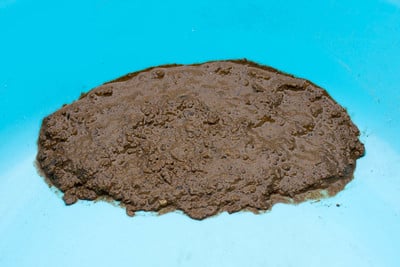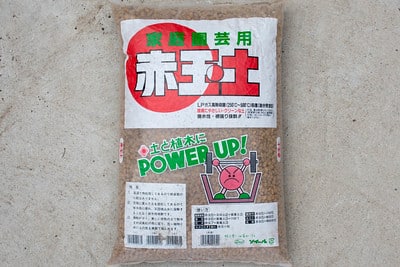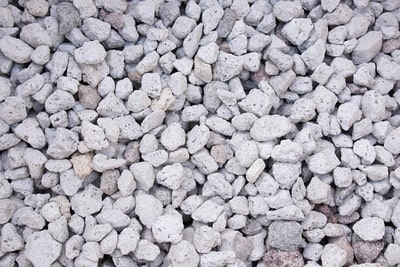What is Akadama?
Akadama is a fundamental component of bonsai soil. It is used throughout Japan as a potting medium for both bonsai and general gardening purposes. More and more, it is used around the world in the cultivation of bonsai.
The term akadama is Japanese for the words “red” – the color of the particles – and “ball” – the shape of the particles. These particles are balls of volcanic clay that have been mined and naturally dried or baked to a desired hardness. The dried particles are then sifted and bagged for distribution.
Why is Akadama Used for Bonsai Soil?
Akadama is effective as a potting medium for bonsai because it has good water retention properties and it drains well. Even better, akadama particles slowly break down over time.
When bonsai are transplanted, cut roots need soil that drains well to stimulate the production of new roots. These roots grow quickly and help trees recover from the stress of repotting.
Over time, root growth and consistent watering break down akadama particles. As the particles break down and become smaller, their ability to hold water increases. Given enough time, the particles will completely break down until all that is left are tiny pieces of clay.
The breakdown of soil particles is important in the cultivation of bonsai as smaller soil particles promote slower growth. During the refinement stages of bonsai development, slow growth is a primary goal as vigorous shoots can thicken branches and make old trees look young.

Akadama

Wet akadama – note the darker color

Akadama dust

Wet akadama dust
As akadama continues to break down and roots begin to fill the pot, drainage can slow to a crawl. Keeping bonsai happy in soil that drains poorly is difficult as roots need both air and water to stay healthy. When drainage is poor, watering is done with care until the tree can be safely repotted during the next repotting season. Once in new soil, the bonsai regain some vigor and the process repeats.
Akadama Brands
Akadama is available under a variety of brand names. While the clay is similar in each, the rate at which the particles break down can differ dramatically. Some bonsai growers prefer soft akadama that breaks down quickly – others prefer hard akadama that breaks down slowly. The key is finding out which brands work for your trees in your climate.
Moderately hard particles might break down quickly when used for trees that grow fast and live in humid climates that receive a lot of rain. The same mix could last years before fully breaking down when used for trees that live in drier climates and grow slowly.
Popular brands of akadama include Kotobuki, Ryusen, Double Red Line, Ibaraki and Nakayama brand akadama.

Akadama bonsai soil
Also popular are pre-mixes or ready-mixes – bonsai soils that include akadama as well as other ingredients including pumice, lava and other volcanic particles. Common brands of pre-mixes include Clay King and Aoki mix.

Clay King pre-mix
Akadama Bonsai Mixes
Although akadama is one of the most commonly used mediums for bonsai soil, it’s rarely used on its own. Combining particles with different structural and water-retention properties allows for the creation of nearly limitless bonsai mixes. How can one determine what makes the most sense for a given bonsai in a given climate?
The best answer is experience. If you don’t have experience with a variety of bonsai soils, try and find someone who does – preferably one who lives or has worked in a climate similar to yours.
Popular Recipe for Bonsai Soil – Boon Mix
Boon Manakitivipart is a successful bonsai professional who studied bonsai in Japan and has worked throughout the United States. (Full disclosure – I’ve studied and worked with Boon for 20+ years.) When Boon began traveling to work on bonsai, he was struck by the general lack of tree health. Before he could work on trees, he needed trees to be healthy – very healthy – and the first step to get bonsai healthy begins with the soil.
Boon created a modified version of the mix he used in Japan and began testing it in collections in California, Washington, Florida, Texas, Connecticut, Ohio and points in between. The mix is simple: equal parts pumice, lava and akadama with some decomposed granite and horticultural charcoal added.

Lava

Pumice

Akadama

Horticultural charcoal

Decomposed granite

Boon Mix
The basic Boon Mix is a great starting point for bonsai growing anywhere in the continental U.S. Depending on where you live, the recipe can be adjusted based on your needs. If, for example, the akadama breaks down too quickly for your trees, try using a harder brand of akadama or adding more pumice or lava to the mix. If your trees need more moisture, try a mix with more akadama in it.
Depending on the region in which you live, pumice, lava and akadama may be hard to find. In these cases, check to see if there are good local alternatives or try ordering online. If you can’t find lava, for example, using more pumice is a good alternative. Again, the best place to begin your research is with experienced bonsai enthusiasts who live or work in your area.
Pre-mixes can also be used to approximate Boon Mix. A mix using two parts Clay King and one part pumice will approximate the ratios of pumice, lava and akadama used in Boon Mix.
Mixing Bonsai Soil
It’s impossible to overstate the importance of good drainage when it comes to bonsai soil. After selecting soil ingredients, it is important to make sure they are well-sifted. Sifting bonsai soil serves two purposes. It can be used to separate particles that are too small to use in bonsai mix, and it can separate particles by size.
Bonsai sieves are available for the purpose, or you can build your own. A fine mesh will quickly sift out dust and tiny particles that impede drainage. Larger screens will separate soil by size. In general, smaller particles are used for smaller bonsai and larger particles are used for larger bonsai.

Sifting bonsai soil
Akadama is generally available pre-sifted. Lava and pumice are commonly sold sifted and unsifted. You can save money by sifting your own soil, and you can save time by starting with pre-sifted ingredients – select whichever option makes the most sense for your collection.
Do note that even pre-sifted soils can break down due to shipping and handling. Sifting ingredients as they are mixed will ensure as little dust as possible ends up in your soil.
Where can I Find Akadama?
As always, I recommend starting bonsai-related searches with experienced professionals who have lived or worked in a climate similar to your own. Local bonsai clubs can be another excellent starting point. Many clubs provide recommendations for vendors in their newsletters and on their websites.
Other options for finding akadama include bonsai nurseries, retail garden centers and online resources.
Bonsai Nurseries
Many bonsai nurseries carry akadama. It’s rare to find a wide variety of brands within a single retail outlet, but that’s often OK as vendors try to carry brands that work well for their clientele. Best of all, bonsai nurseries can be a great source of information about what approaches work well locally.
Retail Garden Centers
Although it’s rare to find bonsai mixes that contain akadama in retail garden centers – and even more rare for nurseries to carry bagged akadama, it’s not unheard of. Check with your local nursery to see if they carry akadama or general purpose bonsai mixes.
Before buying general purpose bonsai mixes that don’t contain akadama, check with a local bonsai club or professional to learn more about whether the mix is recommended for your purposes. If you have a very small bonsai collection a general purpose pre-mix might be great for your tree or trees, but if you have a more serious collection, do some research before buying.
Online Resources for Akadama
Searching online for akadama and akadama-based bonsai mixes will turn up a large number of results. Prices and shipping rates can vary wildly – it can pay to do your homework. I’ll again recommend starting your research with experienced enthusiasts in your area and branch out to online resources like forums for more specific advice that pertains to your trees.
A Personal Note – My Experience with Akadama
I’ve been using akadama in northern California for more than 20 years. I’ve used many brands in many different combinations with lava, pumice, sand, bark and most other ingredients you can imagine. For more than a decade, I’ve been happy using akadama-based mixes.
I’ve been tempted to switch to different mixes – and I continue to experiment every year – but I have yet to produce better results with different mixes.
In 2015, I started importing akadama and akadama-based pre-mixes including Clay King and Aoki Blend. I make these available wholesale, retail, and online. If you’re interested in learning more, information is available at the Bonsai Soil page.
If you have any questions about akadama or bonsai soil in general, please feel free to ask by posting questions below or contacting me directly – I’ll be happy to help!
Subscribe to Bonsai Tonight
New Posts Delivered Every Tuesday and Friday
Dane says
What about Turface? This is a fired clay product used for baseball infields. It sounds almost identical to akedama except the particals are smaller. There is also a man made product made of recycled glass that puffs up like popcorn. Larger particles and white which isn’t so attractive but is very porous. Similar to pumice. I am forever trying to find substitutes for the Japanese products that you seem to have plenty of there in N. CA. Nothing here in Arkansas. Even Brussell uses ” non bonsai specific ” aggregates in his own mix.
Jonas Dupuich says
Thanks for the note Dane. As for turface, see https://crataegus.com/2013/11/24/life-without-turface/ and https://crataegus.com/2016/01/11/further-thoughts-on-turface/
There are a number of man-made products – some are better than others from what I’ve seen. Continued experiments and/or relying on others who’ve experimented in your area may be the best option.
Mac McAtee says
Jonas, Great article and very clear information. You have the knack for putting info in a form that everyone can understand and make use of.
Have you ever done any experiments or tried or even looked at something a guy in California sells and calls “Calidama”, or something like that? If you are familiar with the material can you offer your opinion or results from trying it?
Jonas Dupuich says
Hi Mac – thanks for the note! I have no experience with Calidama at this point – will provide an update if I do.
Mac McAtee says
Great difficulty getting 1/4″ lava rock on the East Coast, or North Carolina anyway. You take a sample to a garden center and get nothing but blank looks. There is a few bonsai specialty stores in NC that have started carrying it, thanks to “Boon Mix” getting more well known. By the time you can get your hands on a 20 pound bag it is more expensive than Akadama.
George Haas says
Jonas, a great job on understanding Akadama and bonsai soil mixes. Thanks, George
Jeremiah Lee says
Great post! I used a few other mixes before Boon suggested Akadama, Pumice, Scoria, Hort C. I’ll never stop using akadama going forward.
Chris says
Keep in mind that despite Michael Hagedorn’s article on the evils of turface, it is used successfully by many bonsai artists. Some trees shown in the National Exhibitions in Rochester have been grown in turface mixtures. The biggest problem I’ve seen with it is the particle size, which is somewhat small. I’ve only been able to get turface allsport, but recently found a local distributor for mvp which is supposedly a slightly larger particle. We’ll see.
I’ve been experimenting with “Boon mix” and others over the past few years, but it’s too soon to make definitive conclusions. I can say, though, that trees didn’t suddenly look better when older turface-based mixes were replaced by akadama/boon mixes. Even a couple of years later, there’s really no evidence of much difference.
Carry on!
endsurg says
Good article. What is decomposed granite? Where do you get it? Is there a brandname for it?
Glenn Pili says
Hi, very informative points about akadama and mixes. I have a small collection of trees but akadama is not available in the region. Can you help me find a supplier?
thebonsaiofseb says
Great article! Rich of information and full o f useful tips!
Chris says
Endsurg, decomposed granite (really just small pieces of granite) can often be found at farm/feed type stores. You can look for “poultry grit” or “grani-grit”. Comes in a variety of sizes, it is used as a supplement for poultry (they require grit in their diets to help them break down seeds in their digestive systems). Make sure it is granite, though, as some of the stuff sold as poultry grit is actually made from oyster shells.
Jonas Dupuich says
Hi Glenn – Thanks for the note, I’ll see what I can do to help identify a supplier. I’ll follow up offline.
carterbeall says
As I have learned more about bonsai, I have come to understand the necessity of avoiding excessively coarse soil in mature specimens and how Akadama evolves with the tree to hold more moisture as the roots colonize the pot. However, what I do not understand is why the growing medium can not do this without Akadama. Assuming that you start with a quality fast draining inorganic mix, could you not simply rely on the addition of organic fertilizers and the decrease in air volume due to root growth to achieve the same ends as the use of akadama?
Jonas Dupuich says
@carterbeall – good question. In short, you can rely on organic fertilizers and root volume to achieve the same ends – the results, however, might differ. When I use straight pumice or pumice and/or lava and/or perlite mixes I find I don’t get as much fine root growth. The increased drainage can accelerate growth, especially during the first year after repotting before the roots have time to fill in.
I’ve also found that the results vary a lot based on variety. My beech and maples, for example, are doing much better in mixes that include akadama than those growing in straight pumice or lava-pumice mixes, even when I use a lot of organic fertilizer.
Carter Beall says
Ok good to note. I have been experimenting with akadama this year, but what I find peculiar is that many texts say that akadama is the preferred soil for conifers, yet you describe it is really the deciduous that appreciate the breakdown of the particles most.
Jonas Dupuich says
Good point Carter. While akadama is often the preferred soil component for conifers, it’s often used in higher percentages for deciduous varieties – trees that typically have much less ability to go without water when it’s warm. It’s interesting to note that the difference between Clay King conifer mix and Clay King deciduous mix is that the deciduous mix has more akadama in it.
Jim Shurr says
So Clay King is not Boons Mix straight out of the bag(other than the charcoal)? You have to add Pumice?
Jonas Dupuich says
Hi Jim – that’s right. Adding pumice and/or lava to Clay King – along with some decomposed granite and charcoal – will approximate Boon’s Mix.
Linda Price-May says
If mixing a large amount of soil following Boon mix ie. 2 gal akadama, 2 gal pumice, 2 gal, 2 gal lava wouldn’t one need to add more than a handful of granite and charcol?
Jonas Dupuich says
Hi Linda – good point. Larger mixes will require larger amounts of charcoal and DG. For a 2g each mix 2-3 handfuls should do it.
Zencalc says
I can only add my experience, which is that since I moved from turface as an ingredient to Akadama, my bonsai are much healthier. As a disclaimer, I live in the Pacific NW. When transplanting bonsai from a turface based soil (turface taking the place of akadama in a boon model ratio mix; all other elements the same) the roots are mushy and weak and top growth is sparse; the soil remains waterlogged. In the three years since I have switched over, those trees I have transplanted into an akadama mix fill their pots with fine fiborus roots in 2-3 years. Trees flush out fuller in spring and do better under heat stress. Just my .02